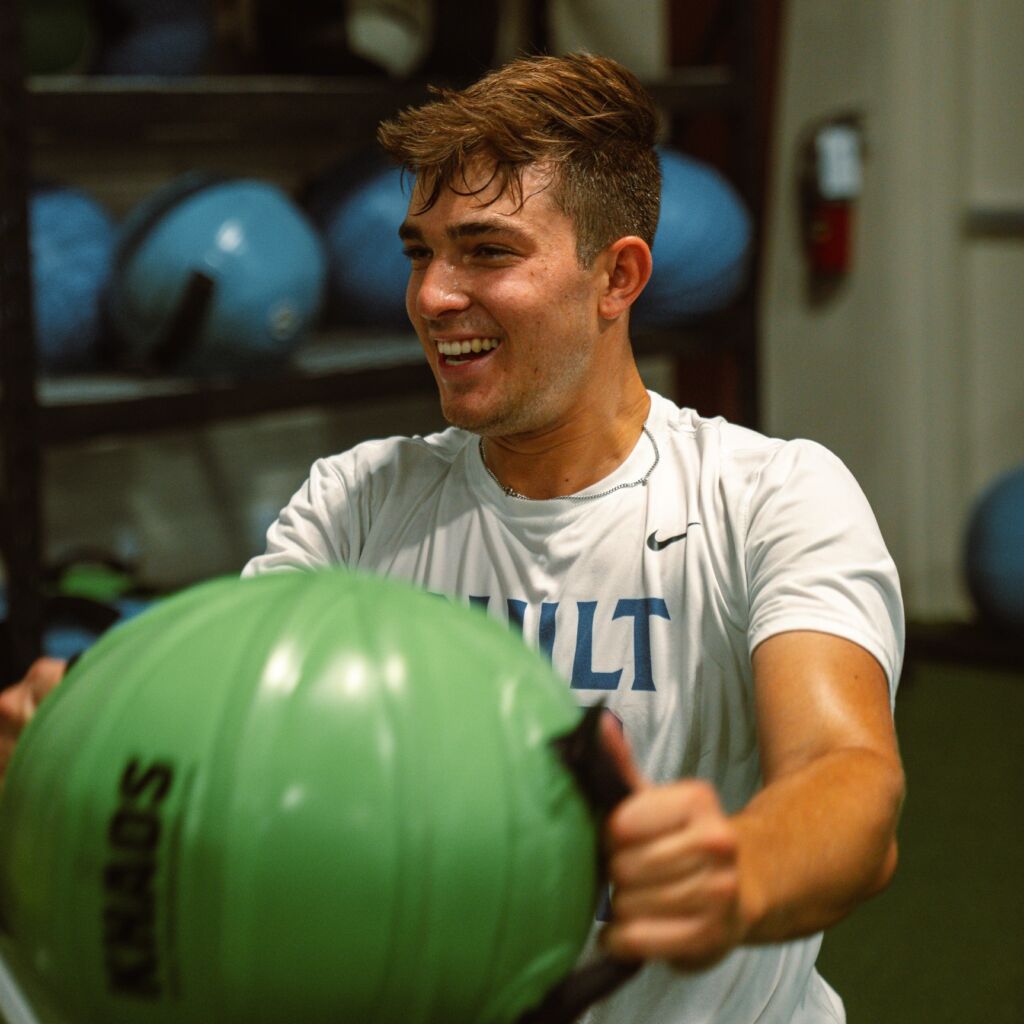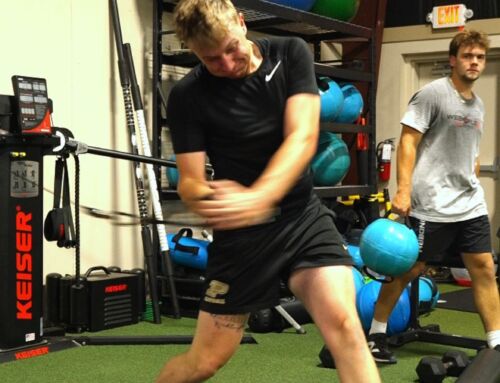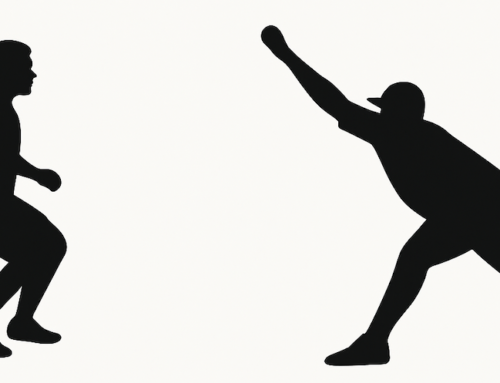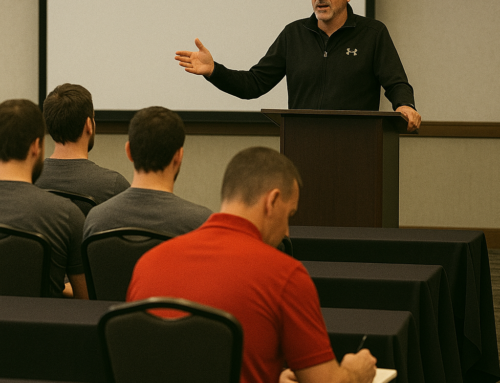
In the world of baseball, there’s a commonly held belief that “practice makes perfect.” Coaches and players alike spend hours on drills, repeating the same mechanics over and over in the hope that they’ll develop the “perfect” technique. While this traditional approach to training might seem logical, recent advances in motor learning and skill acquisition science have revealed that it’s not quite that simple. In fact, aiming for the same mechanical repetition every time could actually do more harm than good.
Let’s break down why repeating your mechanics might go bad and why understanding movement variability could be the key to long-term success and injury prevention.
The Problem with Perfect Repetition
For years, the idea of developing “repeatable mechanics” has been at the center of coaching philosophies, especially for pitchers. Coaches stress the importance of repeating the same movements to ingrain them into what’s often referred to as “muscle memory.” But here’s the problem: muscle memory, as it’s traditionally understood, doesn’t account for the complexity of the human body.
Pitching, for example, isn’t as simple as repeating one motion perfectly every time. Your body has a huge number of moving parts, each capable of moving in various ways to achieve the same goal. What’s more, no two pitches are ever exactly the same. That’s because your body isn’t designed to move like a machine; it’s built to adapt and adjust based on internal and external factors.
The Science Behind Movement Variability
In the late 1940s, a Russian neurophysiologist named Nikolai Bernstein challenged the idea of repeating the same motion exactly the same way every time. Bernstein introduced a concept called “repetition without repetition,” meaning that even if you think you’re performing the same movement repeatedly, no two movements are identical. There’s always some degree of variation due to the complexity of our motor systems.
Baseball pitching, for instance, involves coordinating multiple body parts—ankles, knees, hips, shoulders, elbows, and wrists. Each of these parts can move in different ways, allowing you to complete the same action in slightly different manners each time. This variability is actually beneficial because it allows your body to adapt to changes in the environment, physical state (like fatigue), or the demands of the game.
 Think of every pitch as a run down the luge or the one man rocket sled (skeleton) in the winter Olympics. The winner with the fastest time makes the best and quickest adjustments. That should be the goal of pitcher training — to develop world-class adjusters. Instead of forcing players to repeat a motion perfectly, coaches should focus on building adaptability into their mechanics. This way, when things aren’t perfect—like a in a state of fatigue, windy conditions, or loud, pressure-packed stadiums—a player can still perform well without risking injury or degrading performance.
Think of every pitch as a run down the luge or the one man rocket sled (skeleton) in the winter Olympics. The winner with the fastest time makes the best and quickest adjustments. That should be the goal of pitcher training — to develop world-class adjusters. Instead of forcing players to repeat a motion perfectly, coaches should focus on building adaptability into their mechanics. This way, when things aren’t perfect—like a in a state of fatigue, windy conditions, or loud, pressure-packed stadiums—a player can still perform well without risking injury or degrading performance.
Degrees of Freedom and the Complexity of Pitching
One of Bernstein’s major contributions to motor learning was the concept of the “degrees of freedom problem.” The human body has so many different ways to move that it can be overwhelming to control all the possible movements. For example, the shoulder alone can move in six different directions, and a pitcher’s body has to coordinate all of those movements just to throw one pitch.
Because of this complexity, a rigid approach that tries to force players into one “correct” motion doesn’t make sense. The pitcher’s mechanics should be seen as adaptable, not repeatable. Trying to control every tiny detail of a pitch increases the chance of something going wrong, especially under pressure or fatigue. This is where the idea of “degrees of freedom” becomes important: a well-trained pitcher knows how to use the right movements at the right time, adapting to the circumstances.
Motor Redundancy and Degeneracy: Why Adaptability is Key
Motor redundancy refers to the fact that there are multiple ways to accomplish the same movement. For instance, if a pitcher’s shoulder gets tired, the body can adjust by using other muscles to compensate, allowing the pitcher to still perform well. This flexibility, known as “motor redundancy,” is a strength, not a flaw.
Degeneracy is another important concept. It refers to the body’s ability to use different muscle groups to achieve the same result. If one part of the system isn’t working, another can step in and pick up the slack. So, if a pitcher is tired or sore, or if they make a slight mechanical error, their body can adjust in real time, making slight tweaks to keep performing.
Training should focus on encouraging these natural adaptations rather than trying to eliminate them by enforcing rigid mechanics. Coaches should teach players to become adaptable and flexible in their movements rather than expecting robotic precision.
Why Too Much Repetition Can Lead to Injury
One of the most significant risks of repeating mechanics too rigidly is injury. Overuse injuries are common in baseball, especially in pitchers, because the same movements are repeated thousands of times during practice and games. When a player repeats the exact same movement over and over, specific joints and muscles take on a lot of stress, increasing the risk of injury.
Recent research suggests that movement variability—the natural differences in movement patterns—can actually help prevent injury. By allowing the body to make small adjustments during a pitch, different muscles and joints share the workload, reducing strain on any one part. If a player’s mechanics are too rigid, the body loses this flexibility, and the repeated stress on the same tissues can lead to overuse injuries.
How to Train for Variability
Instead of focusing on perfect repetition, coaches should emphasize adaptability. Here are a few ways to incorporate movement variability into training:
1. Introduce Variation in Practice:
Instead of always throwing pitches in ideal conditions, mix things up. Throw in different weather conditions, on different surfaces, with different implements, at different intensities, or after a pitcher is tired. This teaches the body to adapt and find solutions in real-game scenarios.
2. Focus on Problem-Solving:
We learn movement skills through experience, not through words or thoughts. When something isn’t working, instead of verbally cueing the player to the “correct” mechanics, create training environments that allow the athlete to explore a family of reasonable movement solutions. This approach helps them build resilience and adaptability.
3. Integrate Strength and Coordination:
Instead of relying solely on traditional weight room exercises, incorporate creative, functional movements that blend strength with coordination and skill development. By weaving in variability, perturbations, and time pressure into workouts, athletes can build strength and power while enhancing the coordination needed for adaptable, in-game performance.
4. Always Return to Athleticism:
Rather than relying on rigid mechanical drills, tap into each athlete’s natural athleticism. Encourage throws from different body positions and arm slots, throws on the run, and even off the opposite foot. Get creative and let athletes explore their movements. By prioritizing athleticism and adaptability, you'll develop dynamic, high-level athletes who just happen to be pitchers, not pitchers trying to become athletes.
Embrace Adaptability, Not Repetition
In baseball, and particularly in pitching, repeating your mechanics perfectly every time is not only unrealistic but potentially harmful. The human body is a complex, adaptable system that thrives on variability. Teaching athletes to embrace variability in their movements—while maintaining safe and efficient mechanics—will lead to better performance and a lower risk of injury.
By understanding the science behind motor learning and the benefits of movement variability, coaches can better prepare their players for the dynamic and unpredictable nature of baseball. Rather than striving for robotic perfection, the goal should be to create adaptable, resilient athletes who can perform at their best in any situation.
It's Time to Make Your Move
At The ARMory, what sets us apart in the player development industry is our cutting-edge understanding of motor learning and skill acquisition. We believe that how you learn is just as important, if not more, than what you learn. If you’re tired of the same old approach yielding the same subpar results, it’s time to “Overthrow the Status Quo.”
Call us today at 866-787-4533 to get started on a training process that will not only transform your career but open doors to opportunities you never imagined possible.

Randy Sullivan, MPT, CSCS CEO, Florida Baseball ARMory




